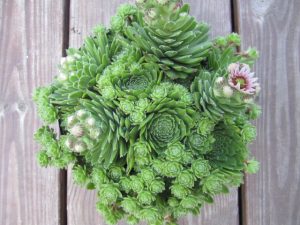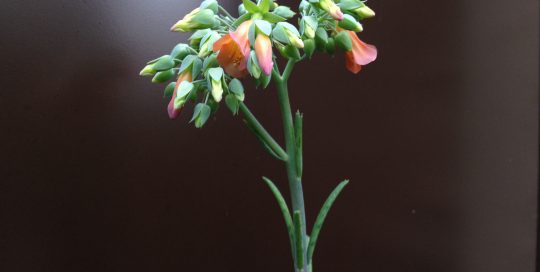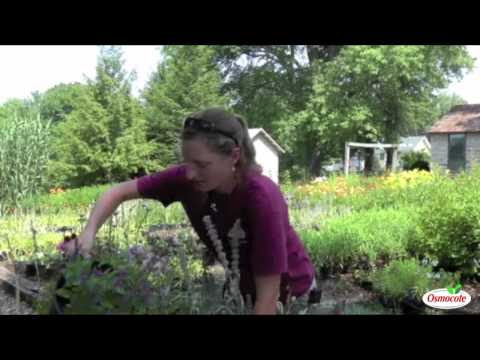Hens and Chicks: The Plants that Keep on Giving
Views: 6675

I can’t control my impulses when plant shopping. For example, I ended up with an overflowing pot of Hens and Chicks today. They were in bloom—how could I say no? Plus, I haven’t really tried to grow them before, so it’s time I got to know more about these garden gems.
I say “I haven’t really tried to grow them” because I did plant one little Chick last year. A leftover from a container I planted for a client. I planted it in the ground next to my gravel path, but some critter tunneled under it and nearly sucked it right into the ground. I replanted the Chick to keep it from completely disappearing into the tunnel, but I wouldn’t say it’s thriving just yet. So when I saw this pot crammed full of Hens and Chicks at the nursery today, I just couldn’t resist.
Lifetime Supply
“Hens and Chicks” is the common name for plants that belong to the genus Sempervivum, or “always living” in Latin. The mother plant, the Hen, will produce many offsets (Chicks) throughout its roughly three-year life cycle. Once the mother Hen has finished blooming, it will die, but each Chick will produce its own Chicks, so there should be an unending supply of plants.
There are many different species and cultivars available in a broad range of colors and textures, even some with hairy leaves. There’s something almost mesmerizing about the arrangement of their fleshy leaves, which spiral in a rosette pattern that must be one of nature’s examples of the Fibonacci sequence. Hens and Chicks are available in most stores and nurseries, and they’re easy to grow in the garden, in containers, and as houseplants. How many other plants can say all that?
Growing Hens and Chicks
Hens and Chicks are perfect for rock gardens and, since they prefer gritty, well-draining soil, can be tucked into crevices in stones where they will grow quite happily. Remember, these are small plants (even the largest of the cultivars gets barely six inches tall), so plant them close to a pathway or near the front of a flower bed where they are easily seen.
Full sun is best for Hens and Chicks. They also can handle part shade, though colors may fade to green in shade. If you grow Hens and Chicks indoors, a south-facing window is best. Adding some sand, perlite, or similar gritty material to the soil will help these plants thrive.
The easiest way to kill Hens and Chicks is overwatering, so be sure to let the soil dry thoroughly between watering.
Hens and Chicks are native to alpine areas, so my Zone 6b garden isn’t their ideal climate, but these little succulents are quite adaptable and are hardy from Zones 4 to 8, and maybe even Zones 3 to 11, depending on the variety.
The most important aspect for successfully growing Hens and Chicks is well-draining soil, so I think I’m going to plant mine in a container for now to keep it out of my part-clay soil, and then maybe add the Chicks to the garden as they grow. It is very easy to transplant the Chicks—just remove them from the mother plant and lay them so that the bottom of the Chick makes contact with the soil. They will root quickly and require little attention once established.
Meet Abbi Hayes
Abbi's Recent Posts

Kalanchoe delagoensis: Mother of Millions







